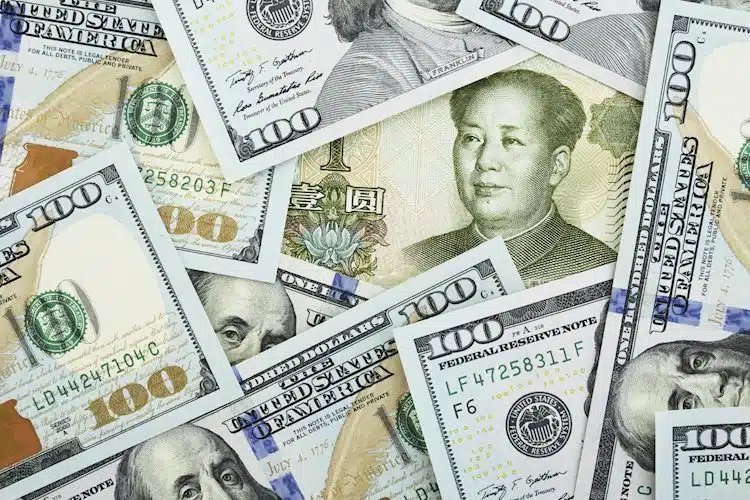The People’s Bank of China (PBOC) is the central bank of China, responsible for monetary policy and regulation of financial institutions. One area of particular focus for the PBOC is the regulation of the yuan, China’s currency. The yuan is a closed currency, meaning it is not freely tradable on international markets. In order to manage the value of the yuan, the PBOC sets a daily midpoint fix that serves as a reference point for currency traders and financial institutions in setting their own yuan exchange rates.
In recent trade, the PBOC set the yuan at 6.8771 against the US dollar, compared with the previous day’s closing rate of 6.8755. This represents a very small incremental increase in the yuan’s value, but it is significant in the context of the PBOC’s management of the currency.
As mentioned, the PBOC uses the daily midpoint fix as a reference point to manage the value of the yuan. The PBOC seeks to maintain stability in the yuan’s value, avoiding sharp fluctuations that could negatively impact the domestic economy or financial markets. In order to achieve this, the PBOC engages in a variety of activities, such as adjusting interest rates and regulating the flow of capital into and out of China.
The onshore yuan, officially designated as CNY, is the version of the Chinese currency that is traded on mainland China. It is tightly regulated by the PBOC in terms of trading restrictions and capital flows. The offshore yuan, known as CNH, is the version of the currency that is traded outside of China, in markets such as Hong Kong. The offshore yuan is subject to less regulation than the onshore yuan, making it more volatile and subject to market forces.
The daily midpoint fix is determined each morning by the PBOC based on a variety of factors, including the previous day’s closing level and the quotations provided by inter-bank dealers. The PBOC seeks to set the midpoint fix at a level that reflects the real value of the yuan, taking into account economic conditions in China and around the world.
The yuan’s value is a matter of great importance for China and for the global economy. China is the world’s second-largest economy and its currency is increasingly used in international trade and investment. A stable yuan helps to promote economic growth and stability in China and around the world. However, as with any currency, the value of the yuan is subject to a variety of factors beyond the control of the PBOC, such as global economic conditions, geopolitical events, and investor sentiment.
In recent years, the PBOC has taken steps to promote the use of the yuan in international trade and investment. This includes setting up yuan-denominated clearing banks in major financial centers such as London and Frankfurt, as well as allowing companies and individuals to hold yuan-denominated accounts outside of China.
The PBOC’s management of the yuan has not been without controversy. Some critics argue that the PBOC artificially suppresses the value of the yuan in order to make Chinese exports more competitive in global markets. Others argue that the PBOC’s tight control over the currency creates a lack of transparency and can lead to market distortions.
Despite these concerns, the PBOC is committed to managing the yuan in a way that promotes economic growth and stability in China and around the world. The daily midpoint fix is just one tool in the PBOC’s arsenal, but it is an important one that provides stability and guidance to currency traders and financial institutions. For those who follow global economic and financial news, keeping an eye on the daily midpoint fix can provide insight into the health of the Chinese economy and the direction of the yuan’s value.


